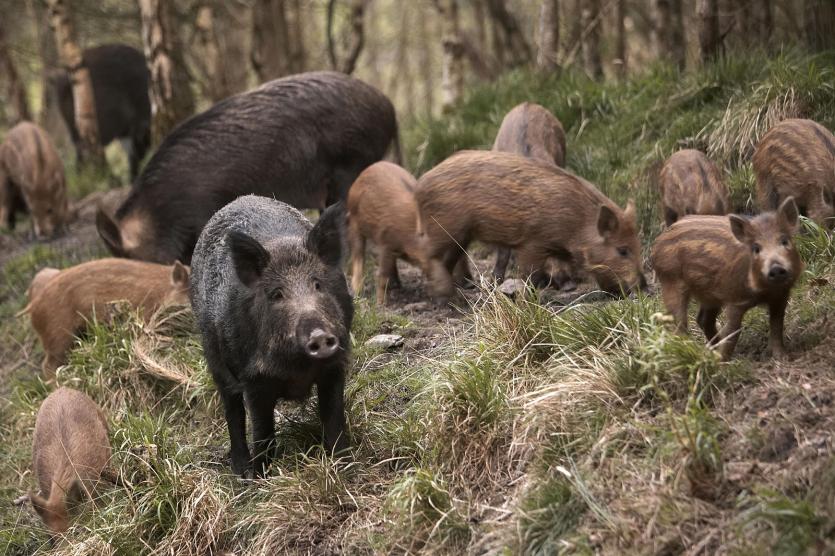Wild pigs root through soil for food, which releases millions of tonnes of carbon dioxide into the atmosphere. Photo:Alamy
By Patryk Krych | The World Daily | JULY 20th 2021
According to a recent study that had assessed the climate impact of wild pigs on a global scale, the total greenhouse gas production of the animals can be measured as an equivalent to about the annual emission of 1.1 million cars.
Feral pigs are known to be one of the most widespread vertebrate invasive species in the world, according to Dr Christopher O’Bryan of the University of Queensland, a lead author on the study. And it’s a common trend for invasive species to yield higher amounts of greenhouse gasses, or environmental upsets.
He, alongside an international team of other researchers had found that such wild pigs can produce around 4.9 million metric tonnes of carbon dioxide annually, due to their practice of uprooting soil in search for roots. A part of this may be due to their invasiveness into habitats and places that they don’t usually thrive in.
“Pigs are native to Europe and parts of Asia, but they’ve been introduced to every continent except Antarctica,” said Dr O’Bryan. “When we think of climate change, we tend to think of the classic fossil fuel problem. This is one of the additional threats to carbon, and to climate change potentially, that hasn’t really been explored in any global sense.”
The species has always gone where European invaders went, often letting loose and wreaking havoc on new environments, reshaping entire habitats and ecosystems to appeal to them. Climate change can now be added to their list of chaos, with the calculation by the researchers estimating that their global CO2 release can rival even a million cars.
“Anytime you disturb soil, you're causing emissions,” O’Bryan added. “When you till soil for agriculture, for example, or you have widespread land-use change—urbanization, forest loss.”
The study, published in the Global Change Biology journal, had given an estimate that was given by the researchers after closely analysing previous models and sources of data. One such data source mapped the estimated number of pigs found all around the world, while another focused on wild pig populations in Australia and how often they disturbed the soil.
Disturbing the soil exposes the microbes underneath the ground to oxygen, which O’Bryan says will cause them to “reproduce at a rapid rate and then that can produce carbon emissions [in the form of] CO2.”
“What this paper brings to the fore is something that soil scientists have known for a while—that bioturbation can play this really key role in soil emissions and soil respiration,” said computational biogeochemist Kathe Todd-Brown, from University of Florida, who wasn’t involved in the research. “You also see similar effects with earthworm movement—any kind of burrowing animal that churns up the soil structure.”






